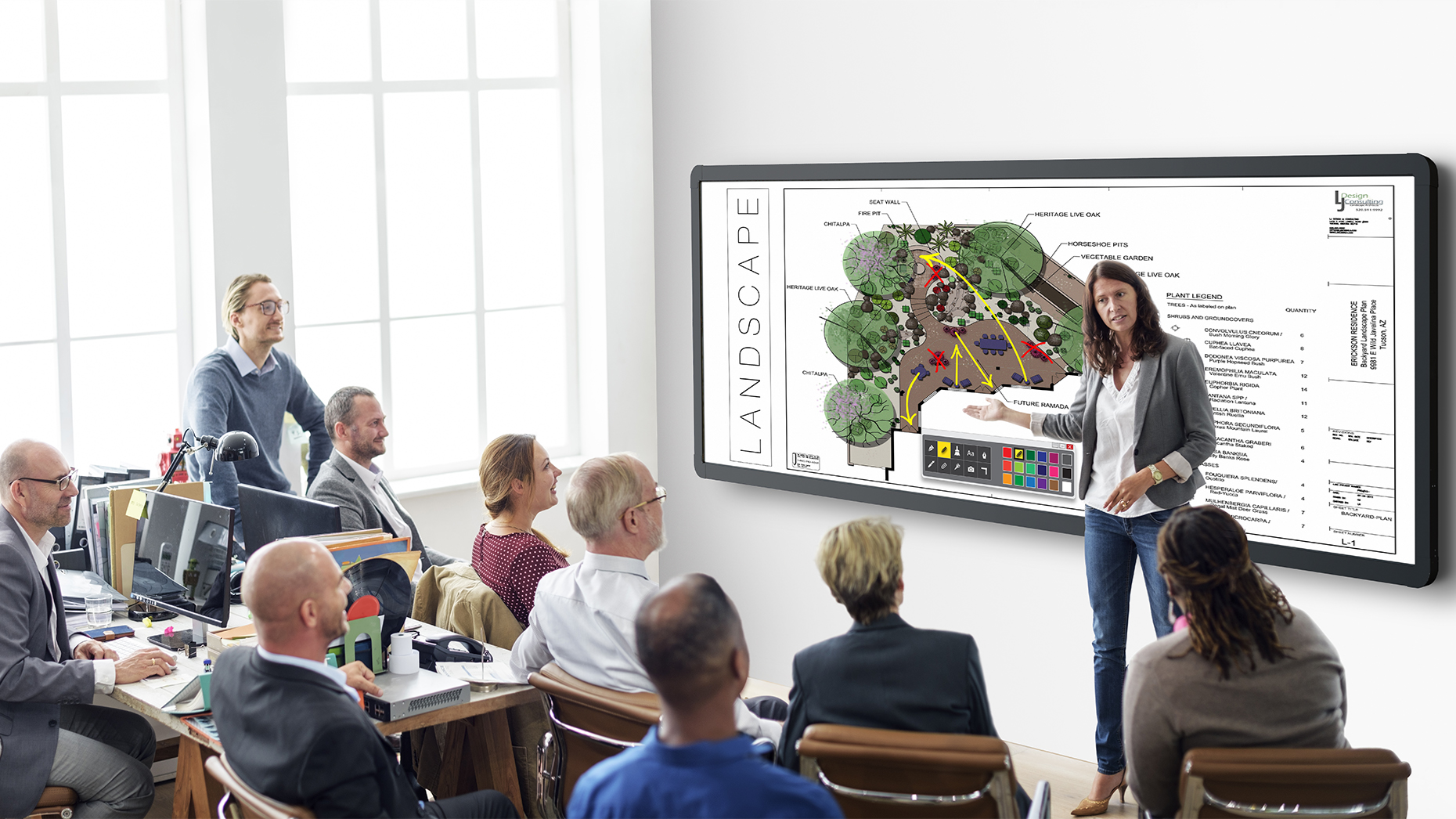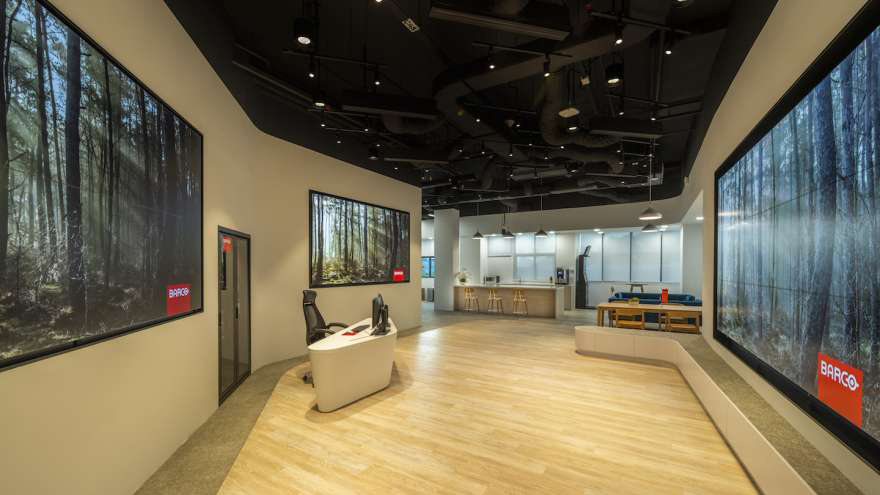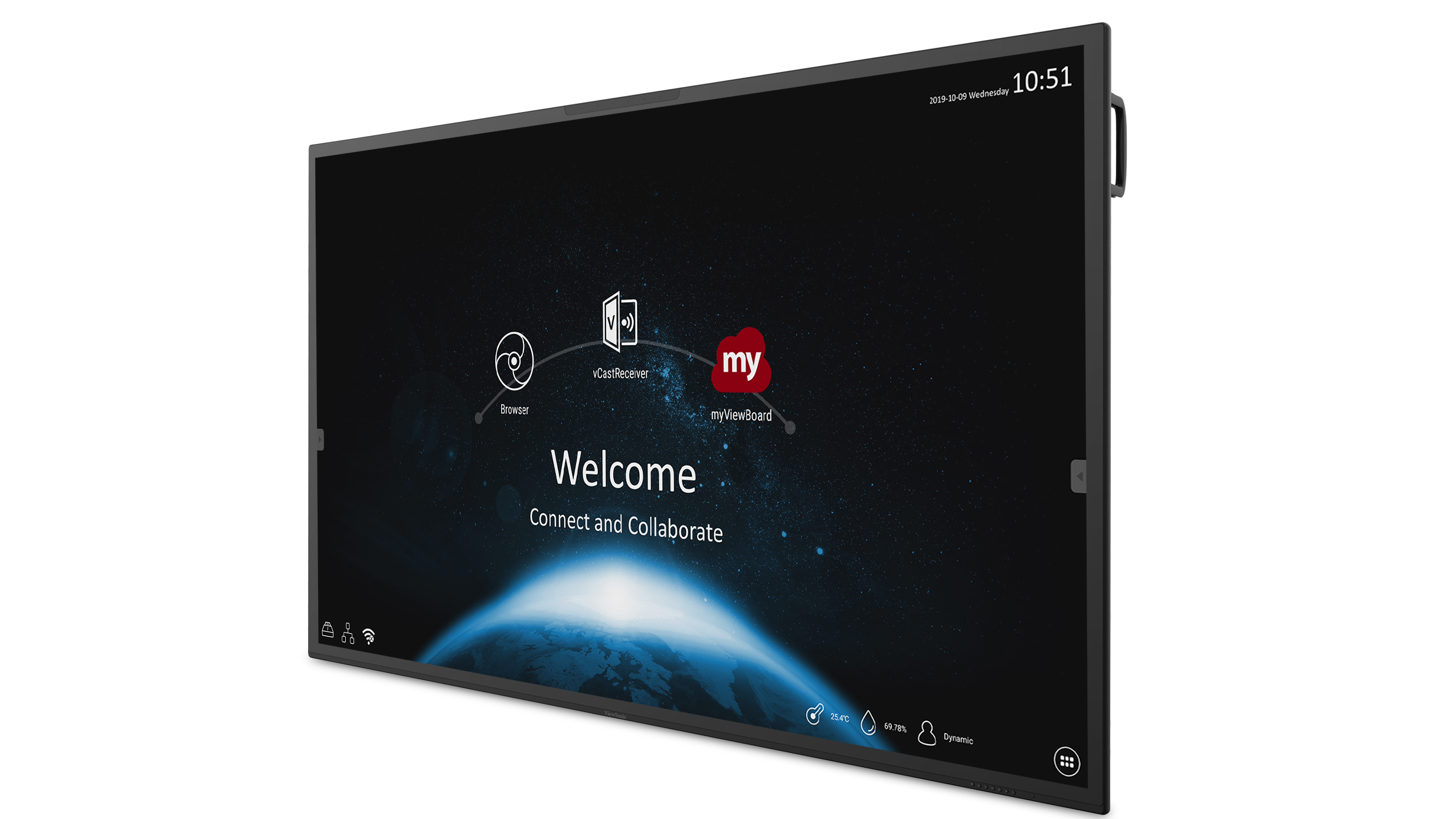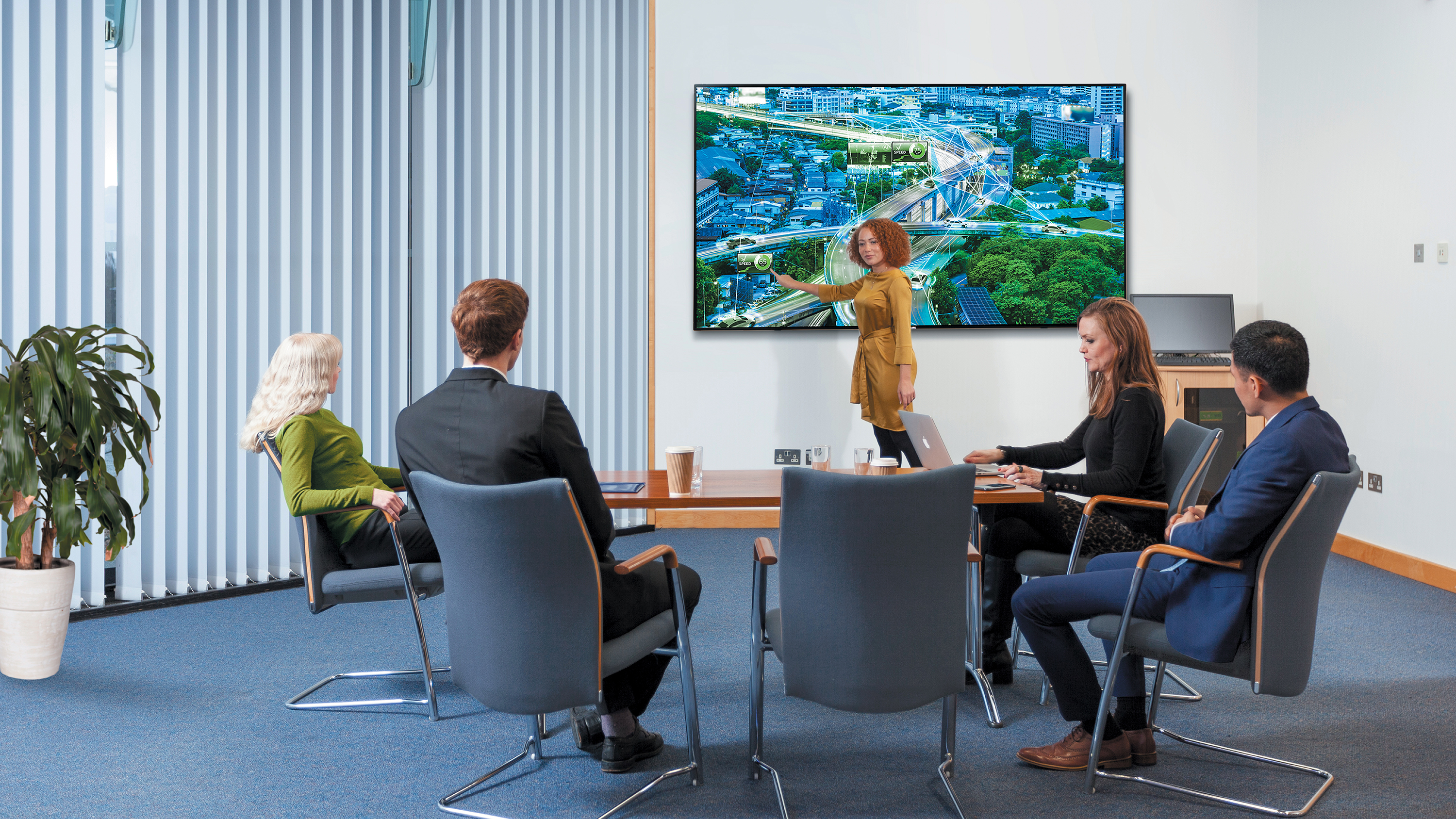Interactive screens are popping up everywhere you look, from smartphones to Starbucks drive-thrus. Recent data from research firm MarketsandMarkets suggests the interactive display market will grow from $9 billion in 2020 to $13.2 billion by 2025, a compound annual growth rate of 8.1 percent.
With prices steadily dropping as user expectations increase, vendors are taking a close look at the safety and usability of commercial-grade interactive screens. AV professionals hope to leverage the power of next-gen displays to deliver unique engagements that people simply cannot get at home. Artificial intelligence, multitouch, touchless capabilities, and features to enhance remote work are just some of the advancements to consider.
Trending Up?
Business sectors like hospitality were devastated by pandemic travel restrictions, but growth in other segments stayed level—or accelerated. Jeremy Sternhagen, Planar’s technical marketing manager, has observed a shrinking interest in “small-scale meeting rooms, at least for a little while,” but there’s been no dip in sales of Planar’s interactive displays, he said. Indeed, that market is growing. “We have not seen a downward trend for our interactive products,” he explained.
Big-Picture Approach
Now the pressure is on vendors to think beyond the bezel and create agile, easy-to-manage interactive display ecosystems. Cost-effective products are in demand, but hardware alone might not win a bid. A big-picture strategy—encompassing hardware, software, content management, and third-party compatibility—makes sense, according to Osvaldo Velarde, technical director, North America, PPDS (formerly Philips Professional Display Solutions). Velarde sees the importance of a solutions-based approach. “This is why we rebranded as PPDS this year, because we’re looking to provide complete solutions to customers. We want to support any software that will drive business forward.”
PPDS is walking the talk with its C-Line and T-Line interactive display families, designed to support native videoconferencing and seamless collaboration in corporate and learning spaces, respectively. In whiteboard mode, for instance, multiple people can use the T-Line to write or annotate while everything on the screen is streamed to laptops or personal devices. Up to 64 devices can be connected simultaneously. No extra drivers are needed, no additional software is necessary.
[ Related: The Latest in High-End LED Displays ]
A takeaway: Solutions that can bridge on-site teamwork and virtual collaboration modalities will be in greater demand, even as schools and offices reopen.

LCD, LED
One size fits none—and context is critical when procuring video technology. There are advantages and limitations to both LCD and LED technologies. While LCD occupies the largest market share of interactive displays, the appetite is growing for LEDs. Direct view LEDs let clients expand display real estate far beyond the size of LCD, for larger viewing applications. Planar’s Sternhagen explained that the company’s Planar ERO (Extended Ruggedness and Optics) technology is a “rugged innovation and optical improvement process that makes LCD and LED display products—which are normally fragile, not designed to be touched every day—able to withstand environmental risks such as people touching it or objects or backpacks banging against it.”
[ Related: Touchless Systems: Manufacturers Discuss AV's Latest Trend ]
Ever-Changing Use Cases
The use cases for interactive displays are as varied as the products themselves. Educational clients want to digitize their environments. Some corporations are deploying high-tech amenities to entice people back into the office while continuing to support hybrid/flex workers.
Customers may be uncertain about the future, but they still want to be prepared. To that end, Barco is emphasizing BYOD (bring your own device) and BYOM (bring your own meeting) solutions. To see these systems in action, tour Barco’s new office in Singapore, which houses the new Barco Experience Center. The space is a showcase of interactive displays and AV technologies—LED, LCD, and collaboration tools—that accommodate the hybrid/remote collaboration culture.

IoT, Wayfinding, & Touchless Interaction
Universities, worship facilities, retail, transport hubs, and corporate campuses have new reasons to invest in digital wayfinding and data capture. Highly responsive, sensor-aware flat-panel displays can help move people through spaces more efficiently while sharing institutional messaging (e.g., hours of operation) or health/safety information (e.g., mask protocols).
Sam Malik of Maxhub pointed to all-in-one displays as valuable tools in the post-COVID landscape. “An area where I’ve seen a surge is direct view LED displays,” he said. “They are easy to service and easy to install. Prices are now much lower, and the technology has advanced. Our all-in-one LED displays, from 110 inches through 220 inches, have gained a lot of popularity for applications where there was typically an interactive flat panel, but now the touch element is not desired. [Our solutions] are extremely bright.”
[ Related: Choosing the Right Interactive Display for Classrooms ]
Maxhub offers a range of LED and LCD displays, some with built-in cameras and voice pick-up capabilities. Content can be updated and changed instantly.
IoT connectivity and videoconferencing are becoming essential features in the new business environment. ViewSonic’s ViewBoard IFP70 interactive display series, for example, have been certified by Microsoft as Windows Collaboration Displays (WCD) that incorporate the Azure IoT sensor hub.
It’s important to note that “interactivity” isn’t defined solely by the physical touch of a screen. Customizable screens can be tied to cameras and sensors to track motion. A screen can be activated and personalized to share information relevant to the person walking or driving by it. Enhanced with robust software, QR codes, RFID, mobile interactions, or other modes of touchless BYOD feedback, new displays can help to eliminate the need to physically touch public devices.
A “touchless” display strategy can also help minimize the impact of person-to-person contact, such as cashiers or ticket agents. Occupancy counting can be managed with signage software, rather than a paid staff member.

Capacity Awareness, Queue Management
Facilities stakeholders concerned about occupancy and capacity management are exploring solutions like PeopleCount from PPDS. PeopleCount can equip managers with the information they need to manage capacity, while also keeping customers engaged with promotional and safety messaging. To see the technology in situ, stroll into the H&M store in Hoog Catherijne, Netherlands, where it’s installed. The PeopleCount single-entrance solution uses a Bosch Flexidome IP Micro 3000i intelligent camera, which is connected to a PPDS bespoke app. No internet connection is required to make the Android-powered Philips PDS digital signage work. The solution has since extended to support not only retail, but corporate offices, supermarkets, bars, and restaurants.
Sanitization
“We’re working hard to come up with treatments that allow displays to be sanitized on a daily basis,” said Planar’s Sternhagen. “We are one of the few companies that actually has LED products that can be cleaned. Particularly when you add Planar ERO-LED proprietary protective coating to video walls, it can be something as simple as spraying a cloth and then wiping the display down like it’s a window.”
[ Related: How Video Walls Can Bridge the Virtual Chasm ]
Hygiene is also a priority for MultiTaction. Decca (MT 557D) is MultiTaction’s new interactive display with advanced hardware and internal processing power (increased by 30 percent). MultiTaction’s Decca offers an easily sanitized antimicrobial display surface to meet “today’s business challenges head-on,” according to a statement by Ari Rahkonen, CEO, MultiTaction.
Get Smarter
Dovetailing with IoT, artificial intelligence (AI) technologies are being used to enhance the interactive display experience. Facial and iris recognition, biometrics, temperature sensing, and sophisticated handwriting analysis and annotation are a few of the features that may prove particularly useful in the post-pandemic landscape. The 2021 Interactive Display Market report by MarketsandMarkets pointed to AI as an emerging technology that will provide “huge opportunities for the interactive whiteboard market” specifically.
[ Related: How AI Is Transforming Pro AV, Facial Recognition and Pro AV: What You Need to Know ]
Click here to read more stories from the April 2021 issue of SCN.

